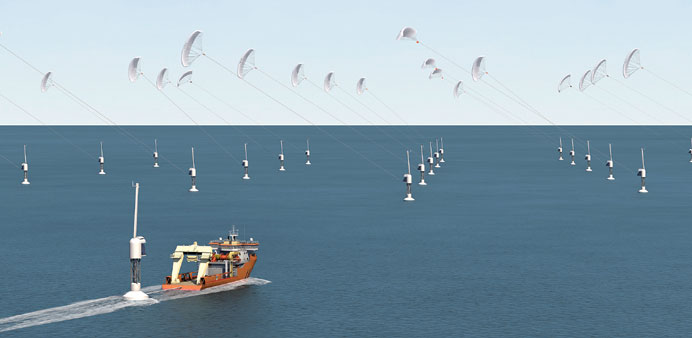By Eckart Gienke
The strong and relatively constant winds to be found 300 metres above the earth’s surface are soon to be tapped by kites to produce commercially viable electricity, according to wind-energy advocates.
“The research is making great strides,” says Guido Luetsch, president of the German BHWE association, which is promoting high-altitude wind power (HAWP). He predicts that by 2018, it will be feasible to replace ground-level wind turbines with the new systems.
“A number of hurdles still have to be cleared, both in technical development and on the legal and licensing aspects,” Luetsch says.
Around German 70 companies and research institutes are currently working on projects in this area, with around half of them ready to unveil commercially viable systems over the next three years, according to a survey conducted by the association.
Many of the researchers are looking into kites, while others are focusing on wings, sails or gliders tethered to the ground. The company Altaeros is talking about a helium-balloon ring with a wind turbine in the centre.
Their common aim is to make use of winds at heights of 300 to 500 metres, or even higher, where almost twice as much energy can be generated, given the strength and consistency of the wind.
This has long been known, but the technology to make use of it had to wait until recently.
While the various companies involved are reticent about the state of their research, US manufacturer Makani presented a 600-kilowatt model recently — considerably more than the competition, but still not enough.
Nevertheless, Google was sufficiently impressed to take over the company two years ago.
The aim is to produce a megawatt or two of electricity per HAWP device, preferably over a 24-hour cycle and 365 days a year.
This may prove to be impossible, even into the future, but high-altitude wind should be able to provide more consistent power than current wind power turbines that attain 4,000 to 4,500 hours at full power a year, by contrast with the 6,000 — of a total of 8,760 — expected from high-altitude generators.
Advocates are also attracted by the low material and installation costs. Whereas a standard wind turbine requires 5,000 tonnes of concrete and steel, a high-altitude wind power system can get by with a tenth of this.
The facilities can be transported relatively easily to regions where electricity is needed — whether disaster areas or remote regions.
Germany currently generates 8% of its electricity from wind, utilising more than 25,000 turbines on land and 700 offshore.
German company EnerKite predicts that HAWP will ultimately cost less than electricity generated in coal-fired power stations, currently Germany’s cheapest option, even compared to hydro dams.
And there will be many more potential sites for generating electricity than with current turbines.
Another German company, SkySails, has already developed kites for powering ships that provide up to 2 megawatts of power.
“We have surmounted many technical problems and are fairly close to a production model,” company chief executive Stephan Wrage says.
SkySails has years of experience with kites at sea and has registered some 300 patents in this area. So far it has achieved 55 kilowatts with a sail area of 20 square metres.
SkySails is now aiming at an offshore test system with 400 square metres of sail area on a 1,000-metre-long tether to generate 1 megawatt.
Wrage believes that power plants generating 10 megawatts are possible — considerably more than a current offshore wind turbine generates. —DPA



